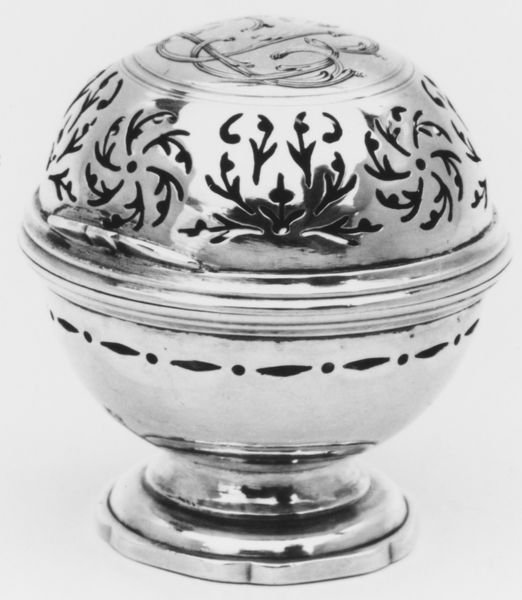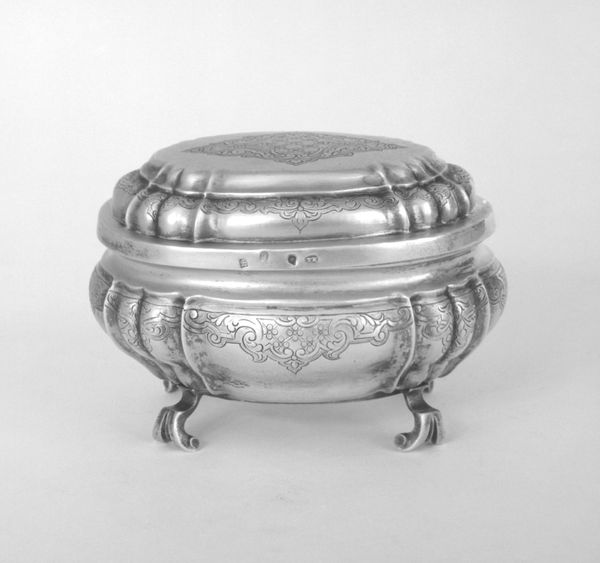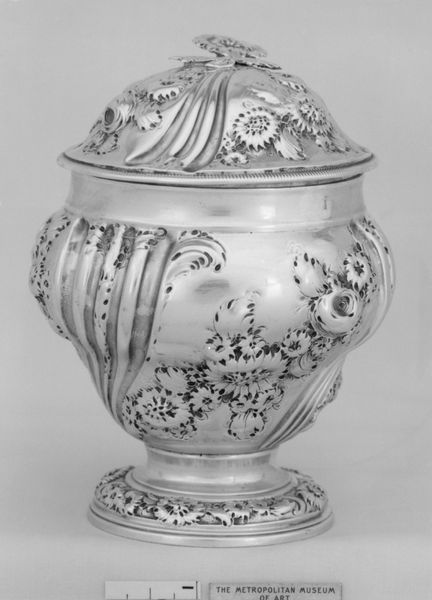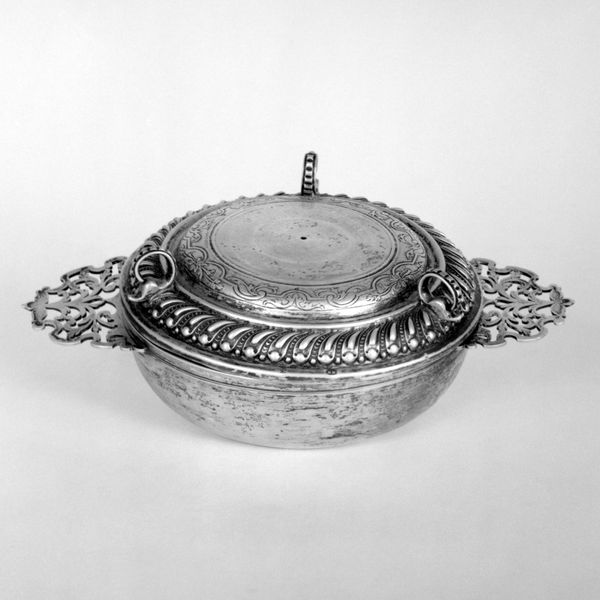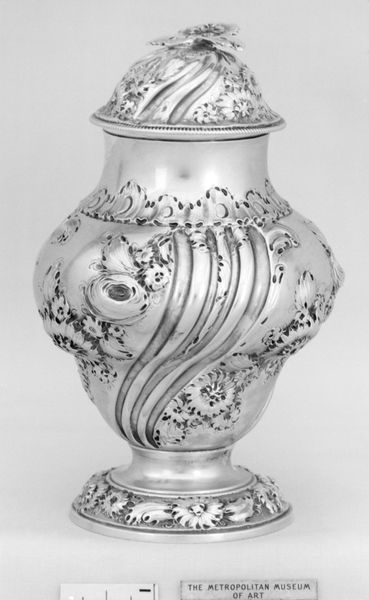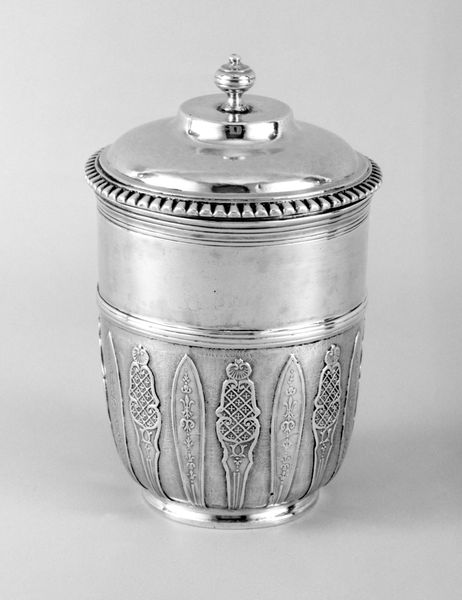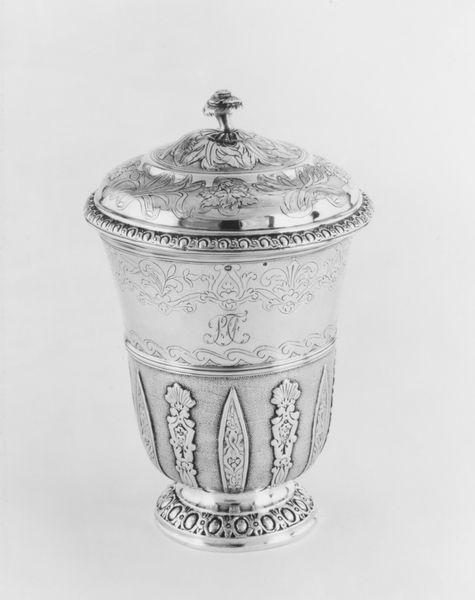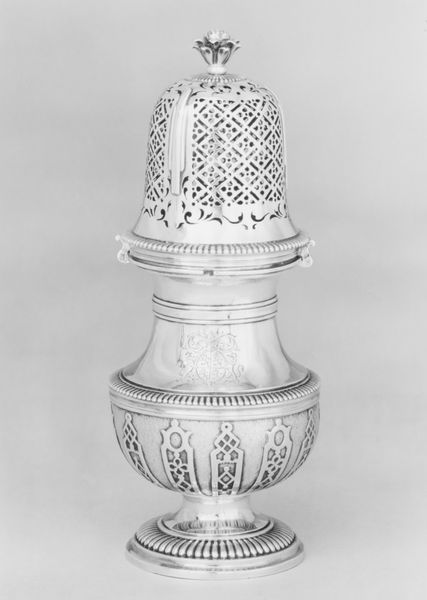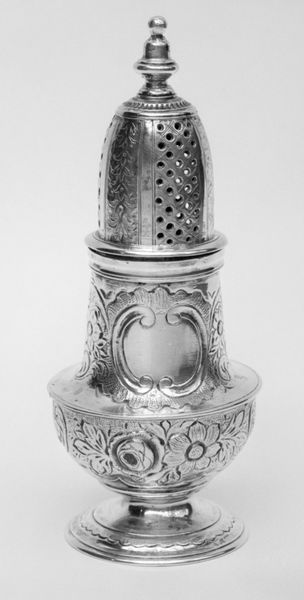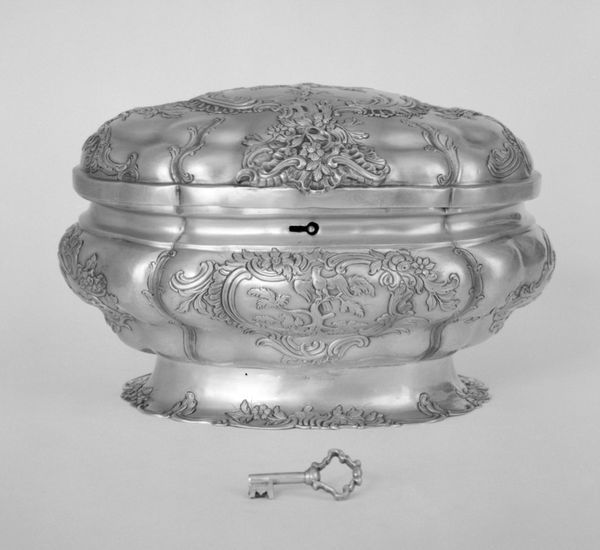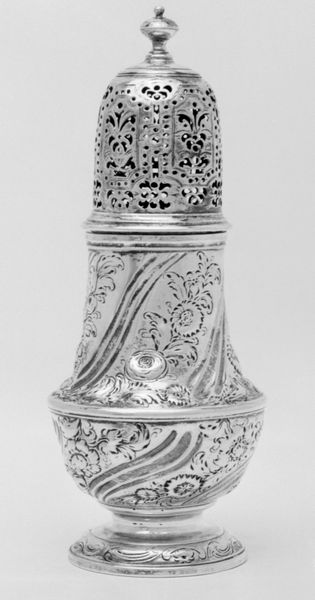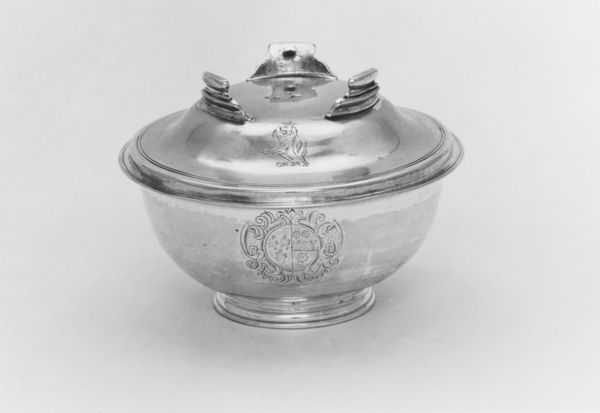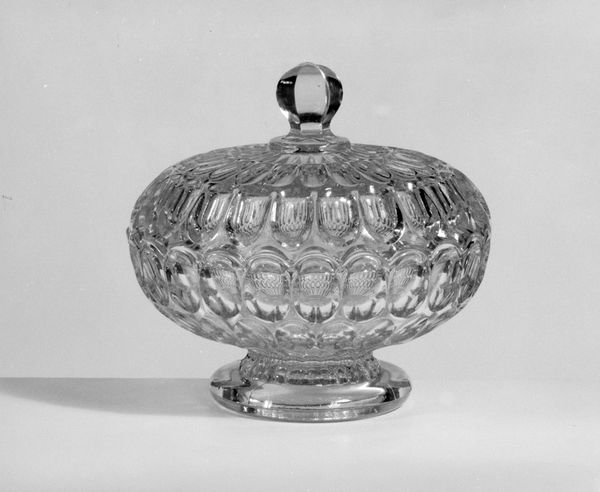
silver, metal, sculpture
#
silver
#
baroque
#
metal
#
sculpture
#
decorative-art
Dimensions: Overall: 3 3/4 × 3 1/2 in. (9.5 × 8.9 cm)
Copyright: Public Domain
Curator: Looking at this elaborate piece, the "Sponge box," made in Paris between 1753 and 1754, one is immediately struck by its Baroque elegance, wouldn’t you agree? It's fashioned from silver, with intricate openwork patterns. Editor: Absolutely. At first glance, it appears deceptively light, almost airy, despite the fact that it is sculpted from solid silver. The floral pattern covering its surface feels both decorative and deliberately placed, I am curious, however, as to what sort of sociopolitical position this artwork occupies within its era, is there a commentary, perhaps? Curator: Well, these small decorative objects, like this silver "Sponge box" made by Henry Allain, really flourished amongst the wealthy during that time, they reflected the status, lifestyle and even social and gender norms. A “sponge box” was meant to hold a sea sponge to apply makeup, so its delicate nature is aimed specifically toward upper-class women and emphasizes their expected concern with personal beauty. Editor: Right. So, we see a convergence of artistry and socio-economic privilege manifesting as a quotidian object. The Baroque, frequently interpreted as ostentatious, when examined critically, reveals narratives around wealth, power, and femininity of the period. Were there specific social functions these sponge boxes played beyond mere utility? Curator: Certainly. They were conversation pieces, objects of display that showcased one's wealth and refinement. They reflect the intense commodification of personal care products, reflecting how wealthy women wielded beauty and aesthetic presentation as both status symbols and a kind of currency within that hierarchical social structure. Editor: This resonates with contemporary discourse around performative identity and how we curate our presentation of self. Understanding art within the power structures, beauty standards, and material culture it existed in allows us to deconstruct societal expectations and consider whose voices and identities were silenced, or highlighted. The incredible detail here makes a statement. Curator: It is a delicate but fascinating lens into the past, allowing us to contextualize Baroque aesthetics within the intricate social history of 18th-century France and begin the dialogue regarding intersectional themes involving economics, beauty and gender. Editor: Indeed, this silver "Sponge box", a testament to luxury, is a powerful catalyst for conversations about art's intersection with socio-political constructs. It gives one pause to consider how art from different backgrounds continues to hold these layered meanings even centuries later.
Comments
No comments
Be the first to comment and join the conversation on the ultimate creative platform.
